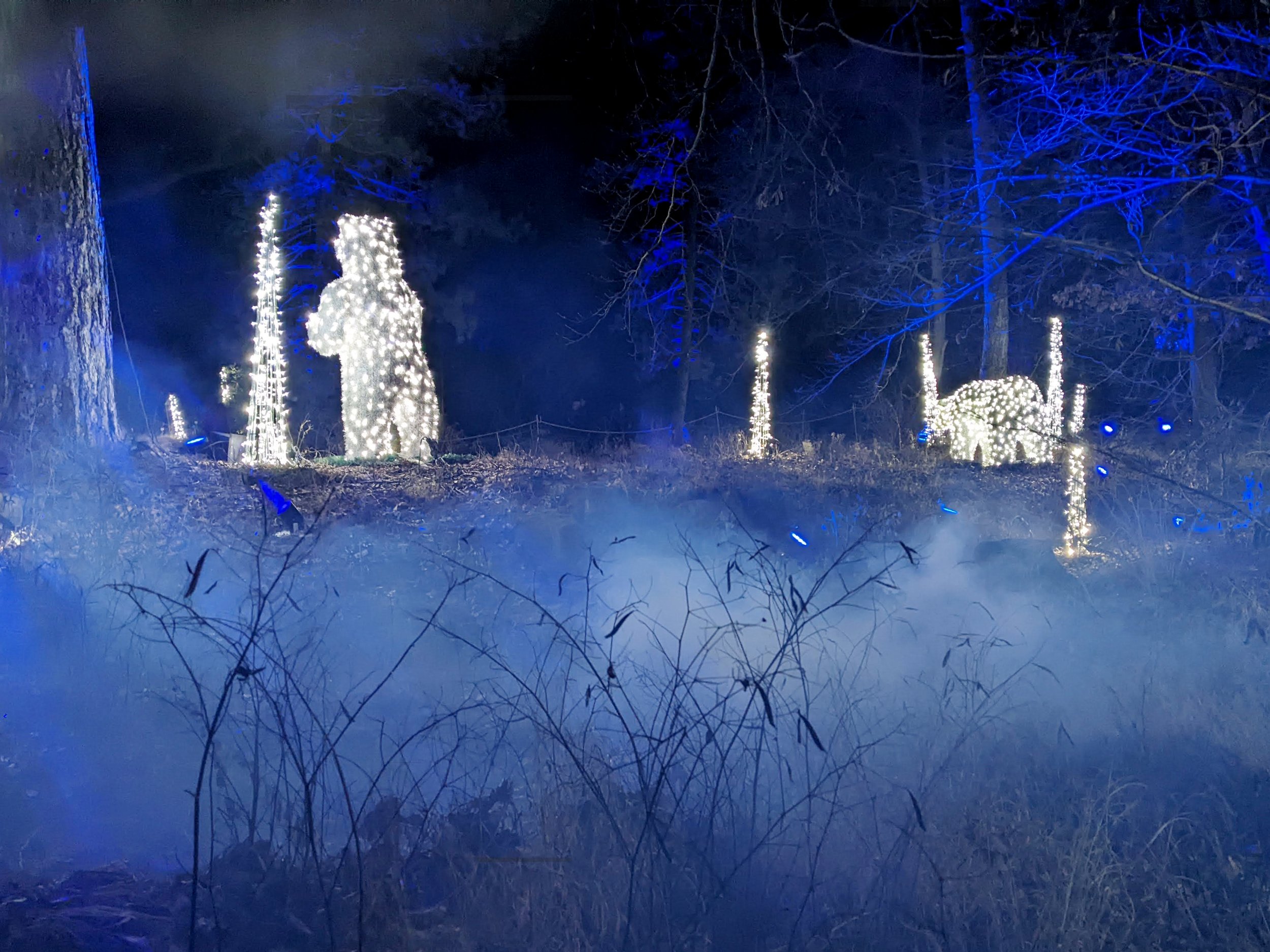HBM153: Klänge from Berlin
/Digital render by Jeff Emtman.
The composer Pauline Oliveros thought there was a difference between hearing and listening. She defined hearing as a passive act, something done with the ears. But she defined listening as something active saying that listening happens in the brain.
Recording a dog in the Saxony region of Germany.
Sam Parker is a recordist who takes inspiration from Oliveros’ words and work. About six years ago, on an episode of Here Be Monsters called Sam’s Japan Tapes, Sam shared dozens of recordings he made during his first (and only) trip to Japan. He released those recordings under the name Observance as an album called Japan, 6/21 - 7/14.
On this episode, Here Be Monsters host takes two trips to Germany, and records the sounds of Christmas in Berlin, New Years in Saxony, and many hours of people and birds just going about their daily lives in the late winter and early spring.
Before Jeff leaves on his first trip, he calls Sam Parker back, to ask for recording advice before the trip, and Sam offers three tips:
Take lots of time.
Capture moments of everyday routine.
Trust your instincts
-
MM:SS - Description. (📸 = Photo)
08:45 - Train to SeaTac airport.
09:45 - Announcements on an Air France flight.
11:00 - Turbulence and people rustling.
12:30 - Berlin's Brandenburg Airport
13:15 - A brown swan hissing and chirping
13:30 - Boats rubbing against wooden piers and a small dog barking.
14:15 - Cars driving on cobblestone streets.
14:45 - Ice Skating at Berlin's Alexanderplatz 📸
15:30 - Swing ride with metal chains at Alexanderplatz. 📸
16:00 - Riding on the subway, then walking up several flights of stairs.
18:45 - Radio playing advertisements, news, and Christmas music
20:45 - A Christmas Eve service in a cathedral with a speaker reading a children's story.
21:30 - Christmas carols playing as people mill around.
22:00 - A wedding party in front of the Brandenburg Gate.
23:15 - A Christmas exhibit with a lit up polar bear and fog machine.
24:00 - Birds chirping in Berlin's Mauerpark as people walk by.
25:00 - Crunching frosted leaves on a cold morning.
25:30 - Walking through a forest in the Saxony Region of Southern Germany.📸
26:15 - Whistling through hands in the forest.
27:00 - Buying 5 kilograms of potatoes from a vending machine as a dog barks.📸
27:30 - Mountaintop shop selling hot drinks and snacks in Czechia.
27:45 - Chopping kindling. Distant fireworks echoing through the hills in Saxony.
28:30 - Snaps and pops of a small fire
29:00 - Distant fireworks to celebrate the start of 2022.
29:30 - Close fireworks echoing.
30:00 - A strong wind blowing on a mountaintop in Saxony.📸
30:30 - A tree swing creaking.
31:15 - 6AM on the outskirts of Berlin. Traffic starting, crow screaming.
32:45 - Captive pigeons fluffing their feathers and cooing at Hasenheide Park
34:00 - Slow motion recording of a sudden hailstorm.
34:30 - A motorized billboard in a subway station
35:00 - Accordion player performs in a subway station in Berlin's Mitte neighborhood.
37:45 - Applause after a play.
38:15 - A small bird singing several songs.
39:30 - Church bells ringing.
40:45 - Wind flapping the torn domes of the Teufelsberg listening station as people sing.📸
43:00 - Walking through the forest near Teufelsberg as bikes pass.
The recordings on this episode are available as an album called “Field Recordings: Germany, 2021-2022” and it’s available for purchase on Bandcamp, under Jeff Emtman’s pseudonym: The Black Spot. Until June 30th, 2022, all profits from the sale of this album will be donated to The International Committee of the Red Cross.
Producer: Jeff Emtman
Music: Remixes from HBM049: Sam’s Japan Tapes.
Photos: Jeff Emtman
Thank Yous: Sam Parker, Johanna Gilje
Sponsor: HBM’s Patreon Supporters
Here Be Monsters’ supporters on Patreon send a small monthly payment.
Listener Kit Roberts supports HBM on Patreon, saying “I’m a patron of HBM because no other podcast has ever made me feel like this one does…so small and singular and yet connected to everything all at once.”
Thank you so much, HBM Patrons.


















